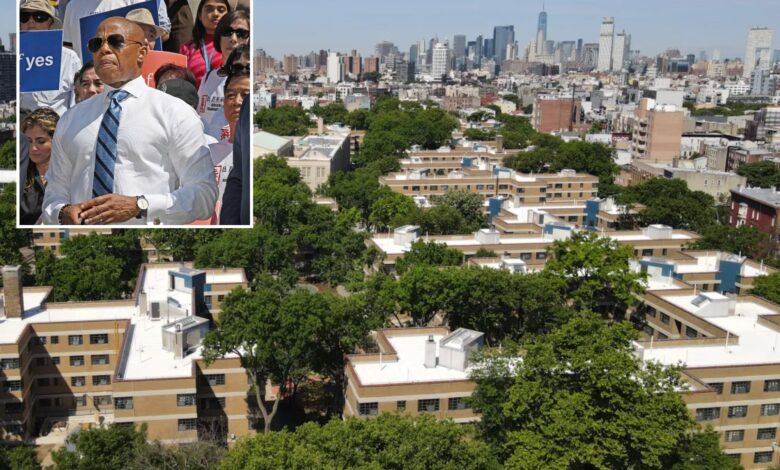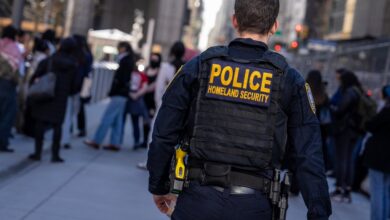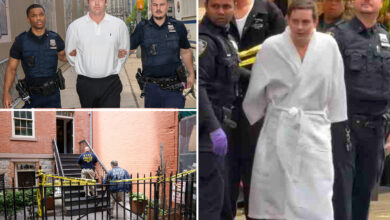Mayor Adams’ key affordable housing ‘City of Yes’ initiative skewered by Council

City Council members are raising concerns about the next step of Mayor Eric Adams’ landmark “City of Yes” plan to bring thousands of apartments to the East Bronx — claiming the chosen area lacks crucial infrastructure.
Lawmakers sounded the alarm last week over the Bronx Metro-North Neighborhood Plan, which will add 7,500 new homes alongside four new rail stops in Hunts Point, Parkchester/Van Nest, Morris Park and Co-Op City.
But the 46-block stretch along the Metro-North train line that the city hopes to revitalize has nowhere near enough schools, cops, firefighters and even sewers to handle the influx of new residents, critics said.
“The Bronx does need more housing, but housing alone is not sufficient,” local Council Member Kevin Riley (D) flatly said during a hearing at City Hall Tuesday.
“If you are going to bring more people into a neighborhood, you are going to need to improve existing infrastructure to address the frequent flooding from storms that we are experiencing, more park spaces, schools, and increased funding for our fire and police stations,” said Riley, who chairs the Zoning and Franchises Committee.
The objections to the Bronx overhaul highlight the uphill battle faced by Adams’ key first-term policy initiative that aims to shake up 60-year-old zoning regulations to pull the city out of a dire housing crisis.
City Hall estimates the five-borough revamping could bring more than 100,000 new homes to New York City over the next 15 years, including by eliminating parking mandates for new housing projects, allowing more office-to-residential conversions and allowing developers to build 20% more if they include affordable housing units in their buildings.
But while nearly every pol in the city and state agrees the Big Apple is in dire need of more affordable housing, council members have warned the mayor’s plan is moving too fast.
Queens Council Member Vickie Paladino (R) bluntly told the City Planning Commission the changes were being “pushed through like a freight train.”
“Do a pilot program. Experiment first, or yank it for now, because this city is not ready for the ‘City of Yes’ just yet,” Paladino said.
This wasn’t the first time lawmakers have raised concerns over the speed of the overhaul.
Last fall, the Council was left flabbergasted when it was revealed that the Adams administration had not consulted the Office of Emergency Management over flooding issues when developing the cornerstone plan.
Paladino, who noted the community boards in her northeast Queens mostly suburban district have “vigorously” voted against the plan, was one of more than 200 people who showed up to speak at a marathon public hearing on the proposal rezoning Wednesday — which started in the morning and dragged on until the early morning hours the next day.
So far 35 community boards have voted against the proposal and 15 have voted in favor, according to a tally from The Real Deal.
Critics said the plan favors big developers and will change the character of well-established neighborhoods.
Queens Council Member Joann Ariola (R) called the massive initiative an “unmitigated disaster.”
“It opens the door for large developers to trample upon small businesses and homeowners and would turn the city into a place where only the interests of those who had the money to build and self-serve their own interests, while other community members like mom and pop shops would see their voices suddenly suppressed,” Ariola said.
Nuha Ansari, executive director of Friends of the Upper East Side, said lifting some of the regulations under the plan will diminish much-needed air and light for residents in the high-density Manhattan neighborhood.
“In Manhattan, we have these very tall buildings, especially on the Upper East Side, so it’s crucial in these areas to maintain the existing (open space) dimensions we have,” Ansari told The Post.
“We don’t think it’s a path we should be taking, especially on a warming planet,” Ansari said.
Adams administration officials said in a statement that they were “grateful” for the feedback from the lawmakers and residents.
“The City Planning Commission takes the public feedback we’ve received seriously – testimony from the hearing, recommendations from community boards and borough presidents, and input from stakeholders across the city – and we’ll be considering potential modifications to craft the most complete and thoughtful policy over the coming months,” said Department of City Planning Director Dan Garodnick.
Some key stakeholders in the city — Manhattan, Brooklyn and Bronx borough presidents — do back at least some of the plan to drastically alter zoning laws.
Bronx Borough President Vanessa Gibson indicated support for the proposal, but said she was not in favor of the removal of the parking mandates.
Manhattan Borough President Mark Levine said the city’s antiquated zoning codes have created a dire housing shortage that can only be fixed by overhauling the regulations.
“Our city is experiencing intense demand for housing, a severe shortage of supply, and an anemic rate of housing production. These trends have resulted in catastrophically high rents that threaten to upturn the lives of a whole generation of New Yorkers,” Levine told the City Planning Commission.
If approved by the City Planning Commission this September, the proposal would go before the Council, which already gutted another swath of zoning changes under “City of Yes” that the mayor said would boost business.




